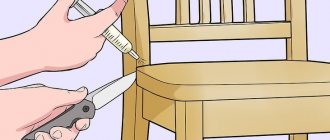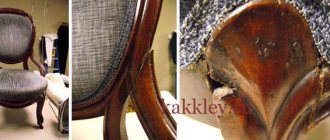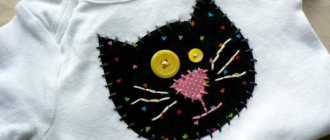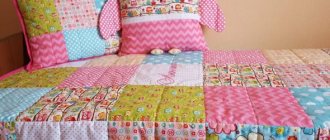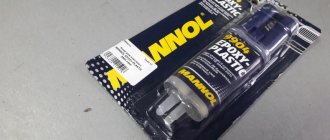Main varieties
When choosing an adhesive for splicing plywood, you must take into account the requirements for the following compositions:
- ease of use;
- viscous or semi-viscous consistency;
- fast hardening;
- absence of volatile toxic substances in the composition;
- resistance to moisture;
- presence of antiseptic properties (not affected by bacteria).
For plywood that is located indoors, any compositions can be used. For splicing materials used outdoors, synthetic glue is suitable; for moisture-resistant boards, it is based on urea resin.
Aqueous or water-dispersed
Among similar adhesive compositions, PVA is most popular. These products do not contain toxic substances or components that emit unpleasant odors. The glue gains sufficient strength within a day, but it takes 2-3 days to completely harden. Due to the fact that PVA and other similar products are water based, these products cannot be used to bond plywood sheets with a porous surface that absorbs moisture.
Carpentry
The basis of carpentry compositions are fats of animal origin: casein and albumin. Both products are available in the form of a dry mixture, which must first be diluted in water. Albumin compounds are used for hot gluing, due to which the created joint gains strength faster.
Based on urea and phenol formaldehyde
Adhesives based on this type contain natural resins that are less toxic than epoxy ones. Compositions of this type are used exclusively for joining wooden products. Glue with such a base creates a transparent seam, so similar products are used to repair decorative elements.
Epoxy and polyurethane
The basis of such compositions are solvents containing toxic substances and emitting a pungent odor. Therefore, it is recommended to work with such products in ventilated areas or outdoors.
Epoxy adhesives are divided into one- and two-component. Compositions of the first type are immediately ready for use. Two-component products consist of an adhesive and a solvent, which must be mixed before starting work. Such compositions are used for rapid joining of various materials, including wood.
How to choose the right composition
The general requirements for adhesive compositions were indicated earlier. But when choosing the right product, a number of additional factors must be taken into account. Basically, when installing plywood, self-tapping screws and other fasteners are used. In cases where material is laid without dowels, it is recommended to use aqueous or water-dispersed compositions. But these products do not tolerate contact with water. Therefore, PVA can only be used indoors.
Epoxy glue is used for laminated plywood. But the latter, due to the special spraying applied to the surface of the material, will not provide sufficient adhesion in this case. Therefore, the surface of the plywood is sanded with sandpaper before splicing.
In addition, when choosing an adhesive, it is necessary to take into account the manufacturer’s recommendations regarding the area of application of the composition.
Popular brands
When choosing an adhesive composition for plywood, it is also recommended to pay attention to the manufacturer’s brand. The higher the demand for a product of a particular brand, the more likely it is that the purchased product meets the above requirements.
Artelit
A Polish brand specializing in the production of adhesive compositions intended for joining wooden products, including plywood and parquet. The Artelit company produces various types of similar products. The range of products of this brand contains waterproof and fast-hardening adhesives.
Bostik
A French brand under which a variety of construction products are produced. The Bostik company produces adhesive compositions based on PVA, polyurethane and others.
"Rogneda"
A Russian brand that specializes mainly in universal mixtures. Rogneda products are not inferior in quality to foreign analogues, but they are affordable.
Titebond
An American company specializing in the production of adhesives intended for floor coverings.
How to glue correctly
Despite the fact that gluing plywood does not cause any particular difficulties, when performing such work the following rules must be observed:
- Before starting installation, it is recommended to clean the working surface from dust, dirt and grease;
- if plywood is glued to concrete using a water-dispersion composition, then the surface is first primed (including with glue);
- The material should be glued to epoxy resin in a ventilated area;
- do not use PVA glue outside the premises;
- After applying the aqueous composition to the surface, the plywood sheets must be temporarily fixed with self-tapping screws, since such adhesives harden within 2-3 days.
As noted, laminated surfaces must be sanded with sandpaper before starting work. This helps increase the level of adhesion of the material to the surface.
Gluing sheets
To glue sheets of plywood, you will need:
- Align the planes that will be glued together.
- Apply adhesive to the work surface following the attached instructions.
- After waiting the required time (indicated in the instructions), connect the sheets together.
- Using clamps, secure the plywood sheets and wait for the composition to completely harden.
At the end of the work, you need to remove excess glue using a rag. If you need to connect two thin sheets together, then after the described manipulations you need to apply a strip of veneer on both sides of the seam.
Splice
Sheets of plywood are glued together at the joint and edge. When using the first fixation option, you need to perform the following steps:
- Align and sand the ends of the sheets.
- Degrease the work surface using alcohol or other similar solvents.
- Apply glue to the prepared surface and press the sheets tightly together.
- Apply glue to the seam being created and lay fiberglass of the required size.
- Run the roller over the fiberglass.
- Wait until completely dry and remove excess material.
Miter gluing is performed according to the following algorithm:
- Stack sheets of plywood on top of each other.
- Using a jointer, process the ends and form a whisker 12 times longer than the thickness of one plywood sheet.
- Clean each whisker with a sander.
- Apply glue and press the fragments with the reverse sides.
- Clamp the sheets and wait until completely dry.
At the end of the described manipulations, it is recommended not only to remove excess glue, but also to sand the seam.
Alternative methods
Often a tenon joint is used to glue thick plywood. In this case, protrusions and recesses of the same shape and size are cut out at the end of each sheet. Then glue is applied to these parts and the plywood is joined together.
This method allows you to achieve a stronger seam than those described above. This is due to the fact that, thanks to the spikes, the contact area between the materials increases.
Additional recommendations
In addition to the recommendations described above regarding working with laminated and other materials, you need to take into account that to create a more durable connection, you should use the glue with which the plywood is impregnated. However, it is also necessary to pay attention to the purposes for which the sheets will be used in the future.
How to glue plywood together with your own hands?
How to use the device
To make it clearer how the device works, let’s connect two pieces of plywood with an “oblique screw”
We measure the thickness of the material in which we will drill holes.
In fact, a regular ruler will suffice for measurements.

